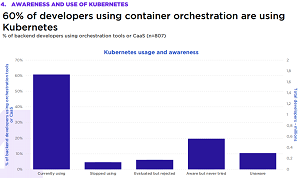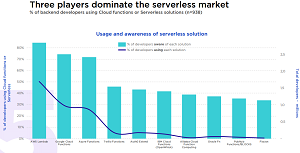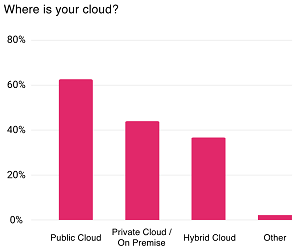News
Cloud-Native Development Survey Details Kubernetes, Serverless Data
There are 4.7 million cloud-native developers in the world, estimates research firm SlashData, which is out with a new study conducted for the Cloud-Native Computing Foundation (CNCF), a Linux Foundation project.
The company's Developer Economics report, titled "The State of Cloud-Native Development" details data on the use of Kubernetes, the popular container orchestration tool, serverless computing and more, based on a Q2 2019 survey of 6,752 developers.
The CNCF defines cloud-native computing thusly:
Cloud native technologies empower organizations to build and run scalable applications in modern, dynamic environments such as public, private, and hybrid clouds. Containers, service meshes, microservices, immutable infrastructure, and declarative APIs exemplify this approach.
These techniques enable loosely coupled systems that are resilient, manageable, and observable. Combined with robust automation, they allow engineers to make high-impact changes frequently and predictably with minimal toil.
Kubernetes was featured prominently in the report, along with serverless computing. Details about the awareness and use of Kubernetes include the following:
- 1.7 million developers are using Kubernetes
- 60 percent of developers using orchestration are using Kubernetes
- 21 percent of developers using orchestration are using Containers-as-a-Service (CaaS) but not Kubernetes
- Developers not using Kubernetes use AWS ECS
Regarding highlight No. 2 above that reflects awareness and usage of Kubernetes, which is one of the more popular open source projects in the cloud and container spaces, the report said:
Any developer interested in containers and Cloud-Native technology is aware of Kubernetes as it has become the industry standard for orchestration. However, our research shows that not all these developers are using it, although a majority are. Sixty percent of developers are using orchestration engines or a CaaS, equating to 1.7 million developers using Kubernetes. Thirty percent of orchestration users are aware of Kubernetes but not using it and the remaining 10 percent are not even aware of Kubernetes.
Is it possible that Cloud-Native developers have not heard of Kubernetes?
 [Click on image for larger view.] Kubernetes Use and Awareness (source: SlashData).
[Click on image for larger view.] Kubernetes Use and Awareness (source: SlashData).
In the serverless market, cloud kingpin Amazon Web Services (AWS) is No. 1 with its AWS Lambda offering (51 percent of serverless users are using AWS Lambda), followed by Google Cloud Functions and Azure Functions.
 [Click on image for larger view.] Top Serverless Computing Players (source: SlashData).
[Click on image for larger view.] Top Serverless Computing Players (source: SlashData).
AWS was also a popular choice in other cloud-native development scenarios. "Cloud-Native developers are significantly more likely to use AWS as a private cloud vendor with 60 percent of Cloud-Native developers using AWS as their private cloud vendor," the report stated.
Furthermore, "The vast majority of the developers that are using a CaaS but not Kubernetes are using AWS ECS or EKS (68 percent). Presumably, these are mostly developers using the old ECS which is not built on Kubernetes. Azure Container Service is used by 25 percent, and 14 percent are using Docker Swarm."
CNCF, however, contrasted that finding with its own similar survey. "The CNCF report, on the other hand, found that Amazon EKS is the most popular tool for managing containers at nearly 30 percent," CNCF said in its own post publicizing the study that it commissioned.
 [Click on image for larger view.] Top Cloud Choices (source: CNCF).
[Click on image for larger view.] Top Cloud Choices (source: CNCF).
Although based on data from an overall larger survey conducted in the second quarter of last year, the report was just released this week, and was publicized by the CNCF, which revealed the public cloud was the most popular datacenter approach, named by 62 percent of respondents, while "45 percent of respondents indicated they were using private cloud/on-premise. While hybrid was a new response for 2019, it was selected by 38 percent of respondents, indicating that it is a widely used approach."
CNCF provided its own link to the report PDF, which features much more information and full methodology.
About the Author
David Ramel is an editor and writer at Converge 360.